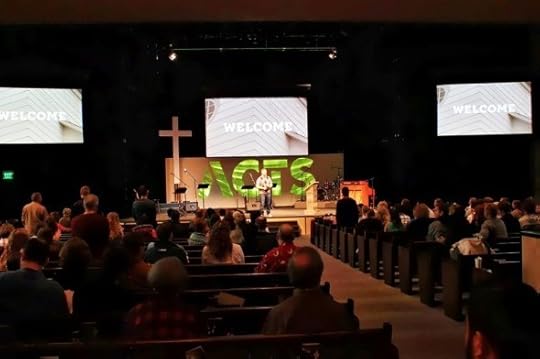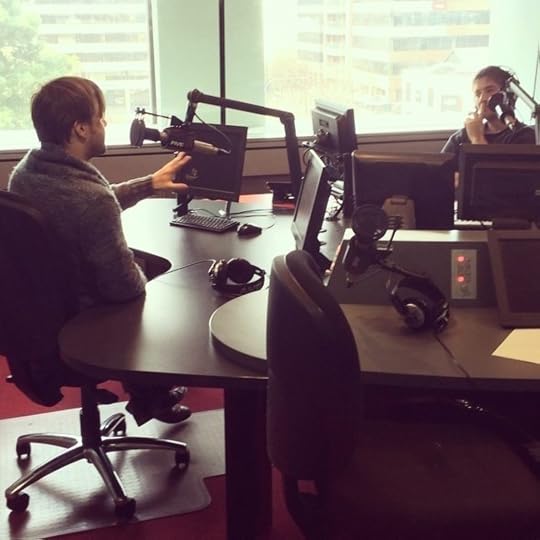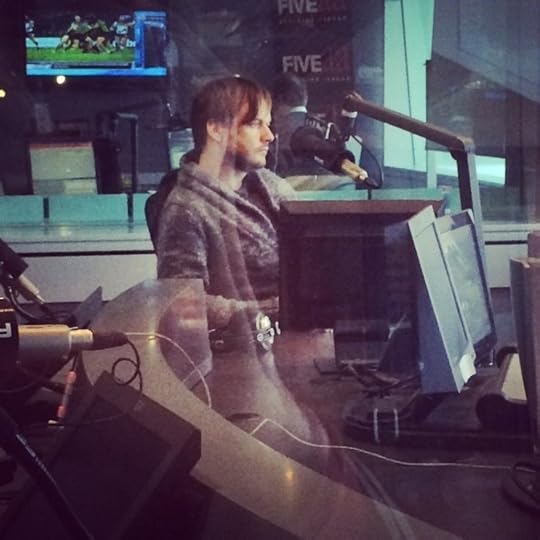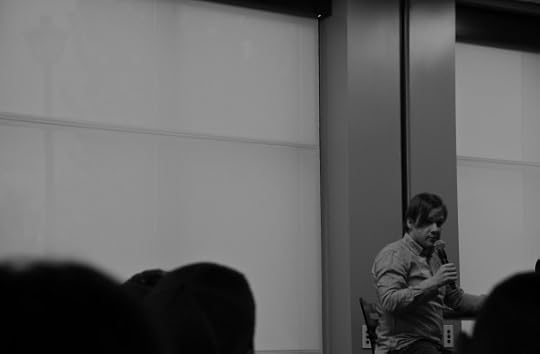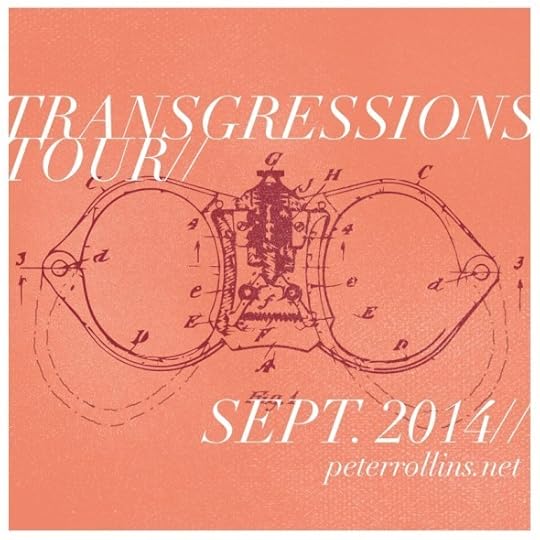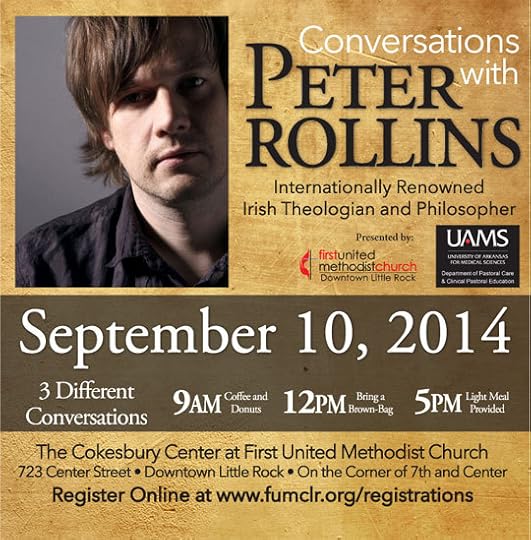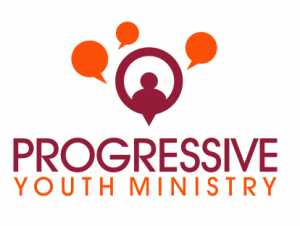Peter Rollins's Blog, page 25
August 25, 2014
Power and Resistance: What we can learn from Mark Driscoll and Mars Hill
Previously I’ve written about how ideology doesn’t merely offer us an explicit set of practices that are acceptable and unacceptable, but also an implicit constellation of acceptable ways to do unacceptable practices.
Ideology doesn’t simply police the borders between the law and transgression, but also offers up ways of transgressing what is acceptable to the law. An ideology thus does not only create the distinction between the category of orthodox and heretic (or sacred and profane), but also offers up ways of being a heretic (profane) that are allowed by the authorities (the sacred).
An interesting example of this can be seen in a recent campaign by the Australian group Love Makes a Way. In protest against the imprisonment of children seeking asylum, various religious leaders in Adelaide engaged in an illegal sit-in at the electoral office of Australian Prime Minister Tony Abbott. For a time this protest was allowed, but eventually the police were called in to remove them.
What we witness here is the slide from an acceptable form of transgressive protest to an unacceptable one.
Initially the act was tolerated. Indeed, if they had simply entered, made a statement, then left this would have been an acceptable transgression allowed by the authorities. It would also have been largely ineffective in making change. But there came a point when the transgression of the protestors was no longer acceptable to the authorities and the police started making arrests.
This wasn’t the first time Love Makes a Way had engaged in such activities. Previously some religious leaders who had been arrested were charged and brought to court. Yet this only caused embarrassment to the Government, for the media covered the story and citizens started to ask difficult questions concerning the unjust policy. In addition, the protestors were acquitted and the Judge commended them for their stance (another serious embarrassment to the Government).
Of course ideological systems quickly adjust to such acts. Hence, those who place themselves in the camp of resistance need to constantly adjust their strategy. In the above example the police quickly learned that they should quietly release the next batch of protestors rather than put him through the courts.
The point here is that ideological systems operate with a subterranean network of transgressive practices, practices that are needed for the smooth running of the system itself. A Government might, for example, champion human rights, freedom and justice, while implicitly engaging in torture, the creation of Black Hole prisons and imprisonment without recourse to the legal system. These subterranean activities are needed by the system to manage a crisis within that system, but the abusive practices cannot be named.
Effective protest involves bringing these unspoken truths to the surface, confronting the system with its own disavowed truth. This can only happen when dissidents refuse to play into the perverse system of acceptable protest (protest endorsed by the system it attacks) and instead find ways of bringing those things into the light of day. Yet, with each move dissidents make, the system will attempt to compensate, adjust, and normalize. Hence new ways of transgressing the norm must be found.
This cat and mouse game is what we see play out in the events surrounding Mark Driscoll and Mars Hill in recent years. As such it offers an instructive example of the relationship between between power and resistance.
Mars Hill, like any ideological system, was able to maintain its equilibrium through a subterranean network of disavowed activities (plagiarism, manipulation of book sales, unfair sacking, totalitarian leadership structures, anonymous outbursts of rage etc.). These activities were, to a greater or lesser extent, known by many members of Mars Hill. But they remained part of the secret pact of the organization.
While Driscoll recently said that he had wished these transgressions were dealt with internally (rather than in the “court of public opinion”) the problem is precisely that these transgressions are generally already known internally (for example, many employees of Mars Hill will have known about how book sales figures were being manipulated and people were being unfairly dismissed). An internal process would then be an impotent gesture that would lead to little more than token changes. For real transformation to happen resistance needs to occur in a way that isn’t endorsed by the system it critiques.
It was only because many who left Mars Hill became increasingly vocal about the abuse, combined with the persistence of individuals like Stephanie Drury, Matthew Paul Turner, and Rachael Held Evans, that the implicit constellation of acceptable transgressions within the Mars Hill edifice (transgressions that enabled it to function), were directly exposed. An exposure that led to the exposure of a fundamentally unjust and oppressive culture.
It’s hard to tell what will happen next, for the system will try hard to adapt. For example Driscoll is currently closely working with the highly skilled conservative PR firm DeMoss. Their job, which they will do well, will be to attempt to re-establish equilibrium within the system via token gestures, minor adjustments and highly orchestrated attempts to appease critics. In contrast, those who have been bringing up the subterranean network of abuses within Mars Hill have few resources at their disposal. Yet regardless of what happens at Mars Hill, what we see playing out is a very clear example of how power and resistance operate.
Politically speaking, this can help us understand the importance of what is currently taking place in Ferguson. What we witness there are protestors who are finding ways to bring to light the systemic racism operating within the political system itself, a resistance that is drawing to the light of day the ubiquitous, normalized violence operating in disavowed ways. Distressingly, when exposing such abuse within a system that controls the police and military, the results will often be brutal, horrifying and deadly. But the world is watching and, if the protestors are successful, change will gradually come.
August 20, 2014
To Believe is Human
Life is painful. It’s full of doubt and uncertainty. And it ends, in this world anyway, with death. For many, the antidote to this pain has been religion. The appeal is obvious: comforting stories, a clear sense of right and wrong and eternal life as the carrot at the end. Even New Atheists such as Alain De Botton have retrieved some of the comfort traditionally offered by the church. But has the church taken up the easy sell of “ending suffering” and promising answers to unanswerable questions.
In contrast to this “Good News,” Peter Rollins argues for a radical and initially disturbing Gospel: we can’t be satisfied, life is tough, and we don’t know the secret. We should attack the idea of God as that which makes us whole, removes our suffering, and offers us the truth. Rollins is less concerned with the question of life after death than with the possibility of a life before death, and his “churches” challenge escapist versions of spirituality, inviting us to embrace complexity, ambiguity and pain. Doubt is part of life, and religion should be able to explore it — instead of presenting an all-singing, all-dancing distraction.
Peter Rollins is a leading figure of the radical Christianity movement and author of books such as How (Not) to Speak of God and Insurrection. A philosopher, theologian, believer, and doubter, he has developed a number of contemplative practices to help Christians accept doubt and complexity, such as ‘Atheism for Lent.’
Chair: Simon Longstaff is Executive Director of St James Ethics Centre, and is co-curator of Festival of Dangerous Ideas.
New Religion Vs New Atheism: A Debate with Lawrence Krauss
Have the new atheists won the battle of ideas by proving that religion isn’t true? Scientists and philosophers such as Richard Dawkins, Daniel Dennett, Sam Harris, Christopher Hitchens and Lawrence Krauss have brought a new fire to debates on religion and belief by using the tools of logic and scientific method to dismantle the ‘God Hypothesis.’ But the response of ‘new religion’ is that theology cannot necessarily be understood by evidence or facts. As with the belief in equality or the belief that torture is wrong, defending religious belief in this misses the point. According to Peter Rollins, “faith is not placed into danger by being exposed as counter-factual,” and to try and defend it in this way is to undermine its very nature. Can these contemporary views of religion open a new front in the atheism vs. religion battle? Or are they just a strategy to co-opt the middle ground for the religious? Join new atheism’s most entertaining exponent Lawrence Krauss and postmodern religious firebrand Peter Rollins for a challenging debate.
Chair: Simon Longstaff is Executive Director of St James Ethics Centre, and is co-curator of Festival of Dangerous Ideas.
Lawrence M. Krauss is a renowned cosmologist and science communicator, and is the author of recent bestseller A Universe From Nothing.
Peter Rollins is a leading figure of the postmodern Christianity movement and author of books such as How (Not) to Speak of God and Insurrection.
August 19, 2014
Facing our Fears: An Interview with John Shuck
http://peterrollins.net/wp-content/uploads/2014/08/religionforlife_2013-03-28T12_54_16-07_00.mp3
This is an interview I did with John Shuck. In it I explore some of the themes from The Idolatry of God, however the interview itself also became an example of how those ideas might play out in peoples real lives. Something that becomes clear at the end.
Secular Religion
http://peterrollins.net/wp-content/uploads/2014/08/PETER-ROLLINS-FIVEAA-ADL.mp3
This is a short interview I did for an Adelaide radio station during my Burning Desire tour in Australia.
August 18, 2014
High Point University, High Point, NC
When art is made to serve a particular political or religious ideology it is reduced to a form of propaganda designed to promote a particular dogma. In contrast, great art is expansive. It can help to open up new worlds, question prejudices, and sensitize us in various ways. Great art arises from a particular time and place, but is not contained by them. It questions the world into which it is born. Within the church today art is often reduced to a handmaiden, serving at the feet of the doctrine. But another possibility exists, a subversive type of art that exists within the church, but is not of it. An art that brings doubt, complexity and ambiguity into the very heart of faith and opens it up to new possibilities.
5:30 PM
Hayworth Chapel
High Point University
833 Montlieu Ave.
High Point, NC 27262
Transgressions Tour, Nashville, TN
In September I’m working with a handful of groups in the US who want to cultivate life-giving, transformative communities that challenge social, political and religious oppression. I will be exploring this through the disruptive figure of the trickster, interrogating what this dissident character might teach us about life, liberation and lasting change. As part of the tour I’ll be speaking at a one day event at Otter Creek. This event is open to anyone but is aimed at people in college and young adults in the Nashville, Brentwood, Franklin and surrounding areas.
There is a $35 cover charge
Register HERE
August 13, 2014
Transgressions Tour, Little Rock, AR
As part of my September Tour I will be stopping off in Little Rock to lead three conversations on my latest thinking, particularly related to themes in my upcoming book.
To register for the event click here
August 7, 2014
Progressive Youth Conference, Chicago, IL
August 6, 2014
Books
Nunc laoreet elit velit, adipiscing pretium turpis facilisis id. Integer ut porttitor nisl. Nulla non sagittis risus. Praesent massa est, fermentum vel nibh sed, dapibus aliquam augue. Praesent vehicula, diam et dictum porttitor, ipsum nibh congue justo, a mollis nibh mi quis libero. Integer non tortor laoreet sapien scelerisque tincidunt.
Share on Facebook
Peter Rollins's Blog
- Peter Rollins's profile
- 314 followers


